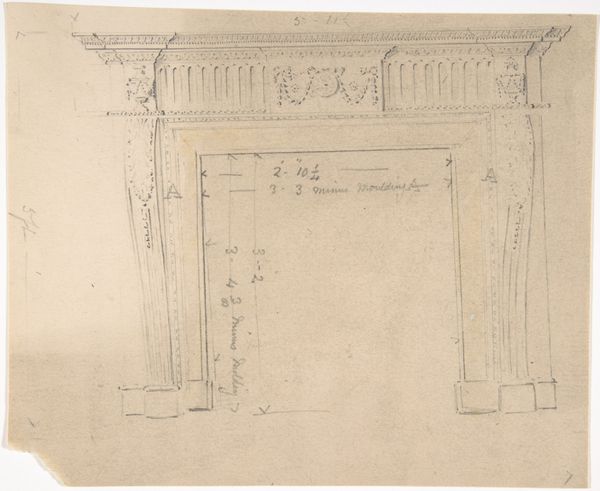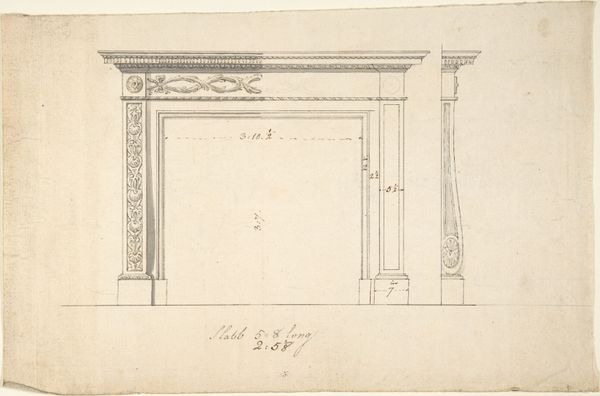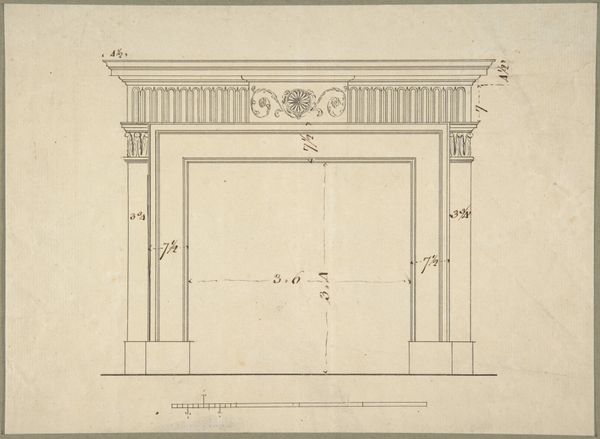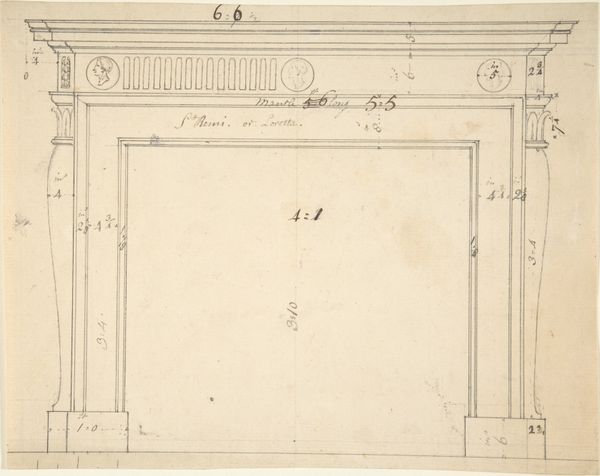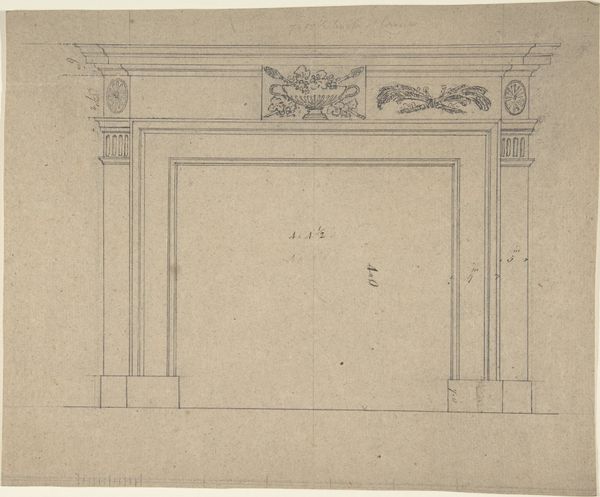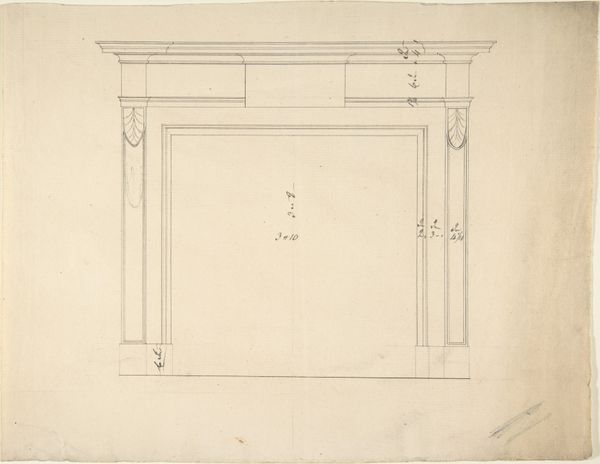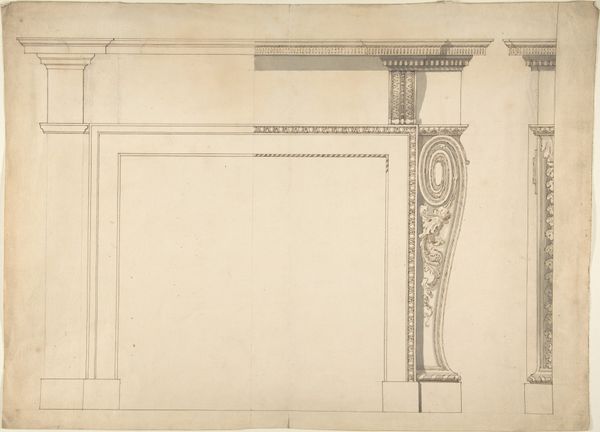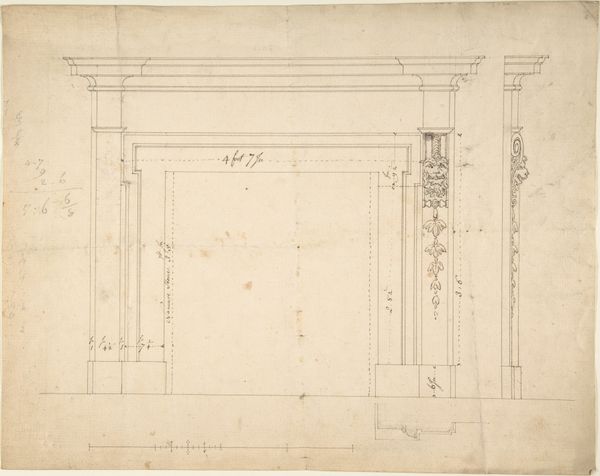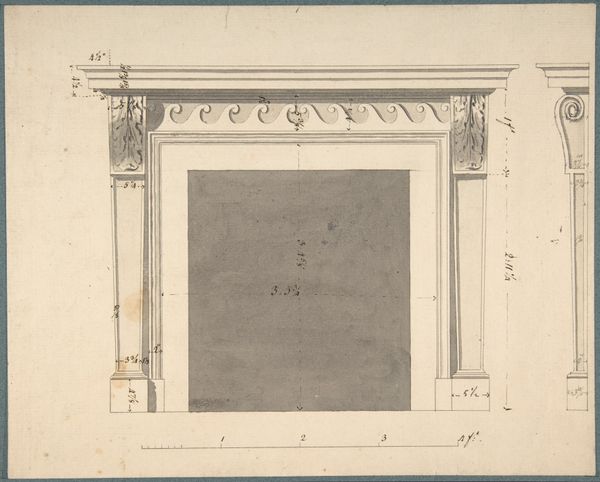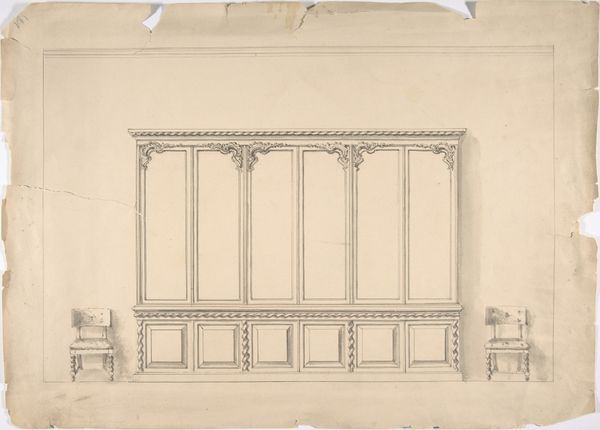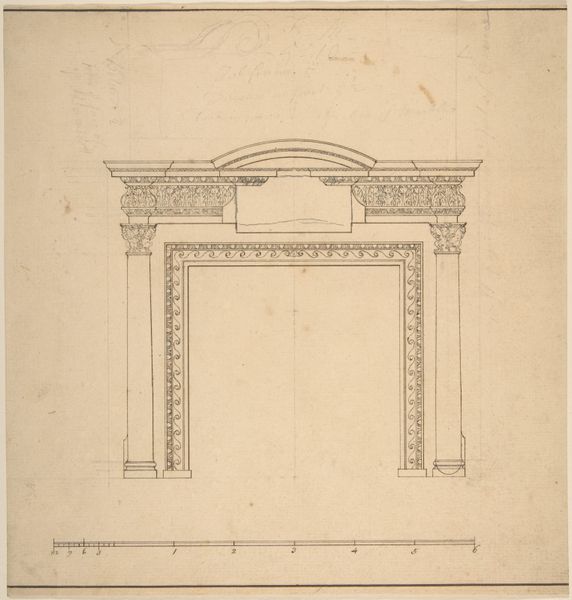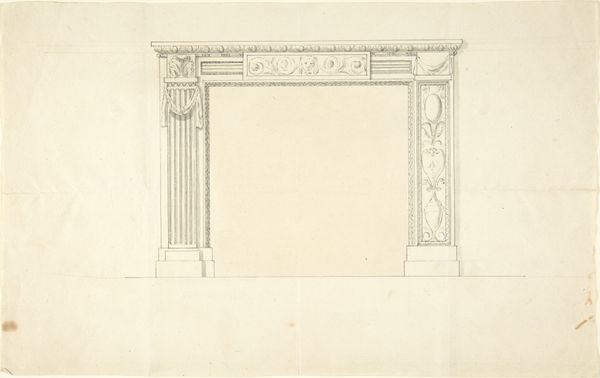
drawing, print, paper, pencil, architecture
#
drawing
#
neoclacissism
# print
#
etching
#
paper
#
pencil
#
architecture
Copyright: Public Domain
Editor: This drawing, "Design for a Fireplace," created anonymously between 1800 and 1850, is made of pencil, print and etching on paper. Its balanced symmetry makes it appear like an orderly structure and I wonder what’s to be learned by focusing on such classical art? Curator: A study of this design lies in understanding its structure as a dialogue between planes and the interplay of light and shadow rendered by pencil and etching. The artist uses a neoclassical style to create this orderly symmetry and a calculated construction of vertical and horizontal elements. Consider how the cornice, frieze, and jambs are defined and what effect the proportions and ratios of these components produce on the viewer. Editor: What is particularly striking to you about the design of these components? Curator: The rigorous precision of the architectural drawing, rendered on paper, embodies Neoclassical ideals through each calibrated measurement and each deliberate embellishment that adheres to a balanced system of aesthetic values. The drawing also utilizes its planar surface to depict various orthogonal forms which creates the idea of three-dimensionality. Editor: So, in a sense, we are looking at structure dictating meaning. I thought architectural sketches were more artistic, with loose lines! Curator: Line quality does have significance, yes. What impact does it have in your own impression of the design to know that the rendering utilizes the clean, rigid form of precise architectural measurement? Editor: It underscores the idea that this design has intent. By carefully analyzing structure and intent, we gain insight. Curator: Precisely. Form creates not only a structural system for a design but also a frame for how the viewer perceives a certain order.
Comments
No comments
Be the first to comment and join the conversation on the ultimate creative platform.
